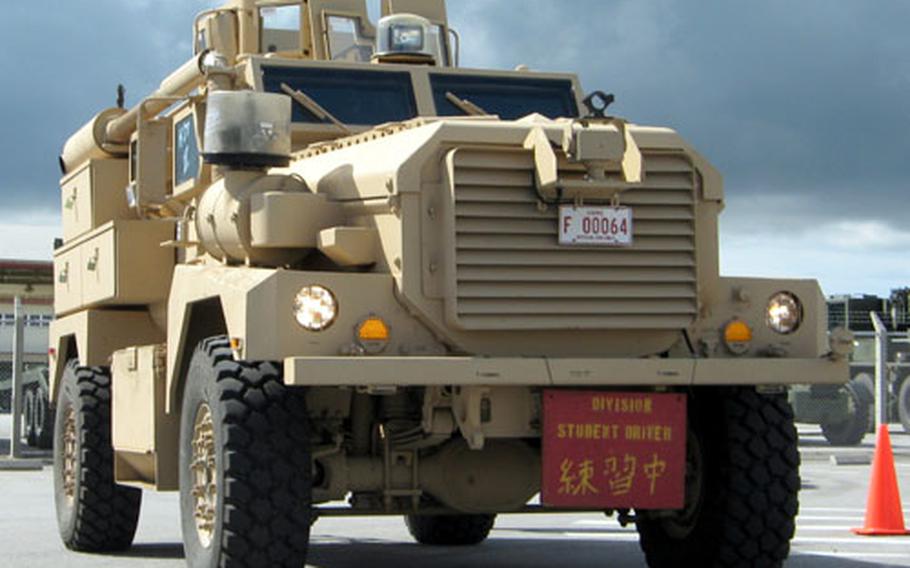
Nineteen MRAPS arrived on Okinawa in May, and Marines began training with them on Camp Hansen in October. (Cindy Fisher / S&S)
CAMP HANSEN, Okinawa — It’s the ride of choice among troops in Iraq, but until recently Okinawa Marines could not get certified on the island to drive Mine Resistant Ambush Protected vehicles.
Troops preparing for Iraq deployments had to either be flown to the States for a course run by the manufacturer or wait until they were in the war zone to get a license to drive MRAPs.
That all changed when a course opened at Camp Hansen last month.
After three classes, about 60 Marines have already been licensed, said Sgt. Daniel J. Fisher, 25, the primary instructor.
Training troops here means they are better prepared when they get in country, said Fisher, who got his license during an Iraq deployment.
"So much has been done for blast protection that one of the sacrifices has been visibility and maneuverability," he said.
The MRAP’s heavy-duty armor provides additional protection from roadside bombs, but the vehicle has smaller windows and a larger turning radius than other troop carriers.
"It’s quite a big vehicle," Sgt. Lam Tran, 22, with Combat Logistics Battalion 4, said after driving on the course last week. "You can’t really see anything from certain views."
Tran said his assistant driver had to help him with the vehicle’s blind spots. Familiarization is the best way to overcome such limitations, Fisher said.
During the course on Hansen, students drive 75 miles during daylight and 30 miles at night on roads, and drive 15 off-road miles during the day and five at night, he said.
But instructors had to be creative to do all that driving on Hansen because they can’t drive the vehicles off base except to go directly from one base to another since MRAPs are just too big for many of Okinawa’s narrow roads, Fisher said.